The question, “Presta or Schrader?”, may seem confusing when you’re new to cycling and head to a bike shop to buy a replacement inner tube.
For the vast majority of bikes, there are two types of valve: Presta and Schrader.
These two types are most commonly found on a bicycle inner tube and enable you to inflate or deflate the tyre.
While they perform identical functions, there are some differences between them. Crucially, you need to know what valve type you have when replacing an inner tube or pumping up a tyre.
In this guide, we’ll run you through what exactly Presta and Schrader valves are, the pros and cons of each, as well as which valve and bike pump you need for your bike. We’ve also got a separate guide to inner tubes, covering sizes, materials and more.
What types of bike tyre valves are there?
While Presta and Schrader valves are the most common valves found on bicycle inner tubes, there are a few others that are less well known.
Schrader
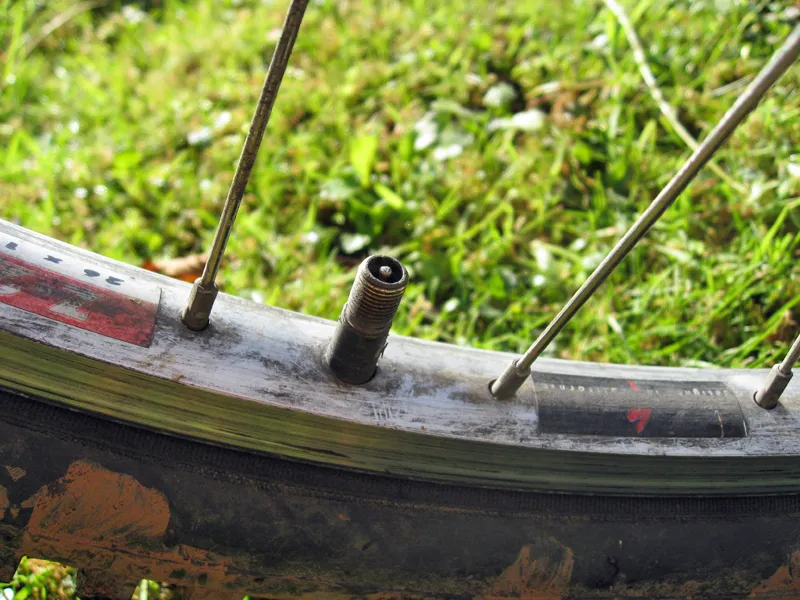
If you've pumped a car tyre up, you've probably encountered this valve in the past.
The Schrader valve is wider than most, needing a wide hole in the rim to be inserted.
A spring-loaded pin on the inside needs to be pressed down for air to flow through the valve and there is a thread on the outer wall for screwing a cap onto.
Presta
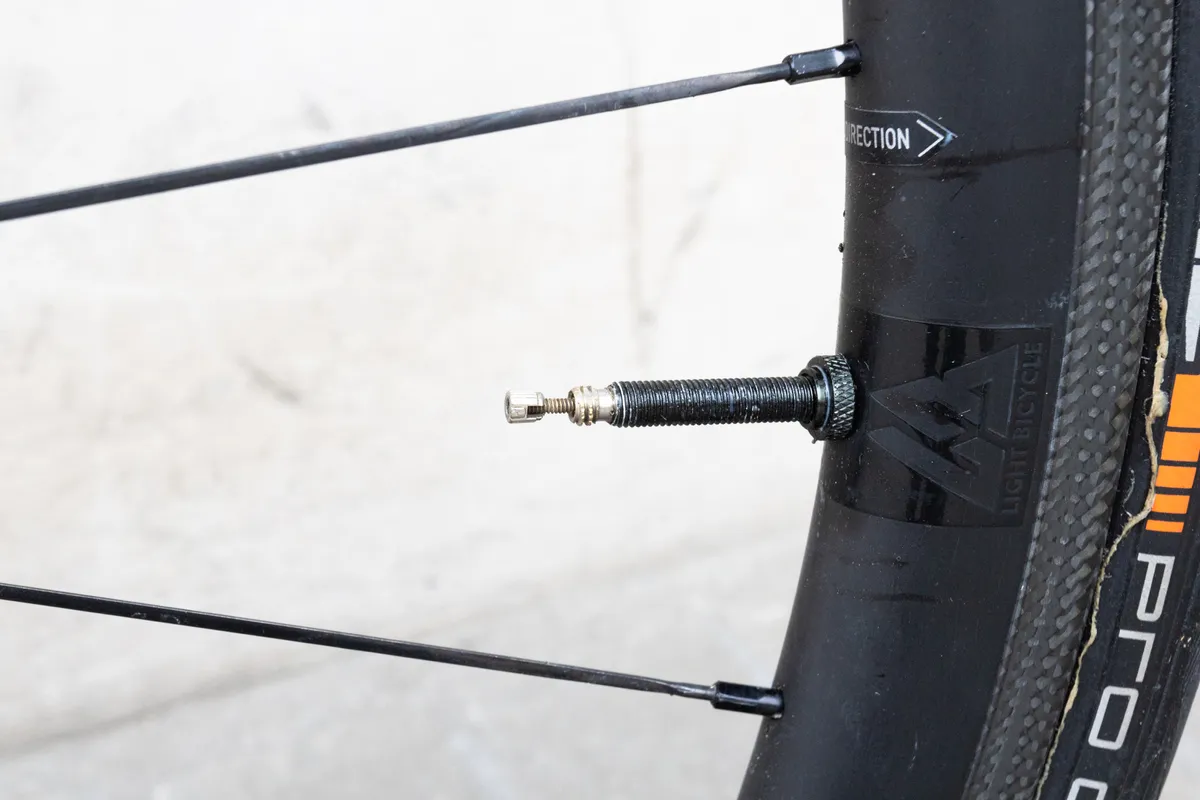
Presta valves are more common on higher-end bikes and feature a narrower profile than Schrader valves.
The valve tapers towards the end where the stem inserts into the outer body, enabling air to flow into the tube.
Unlike the Schrader valve, only air pressure is needed to close the valve.
Woods / Dunlop
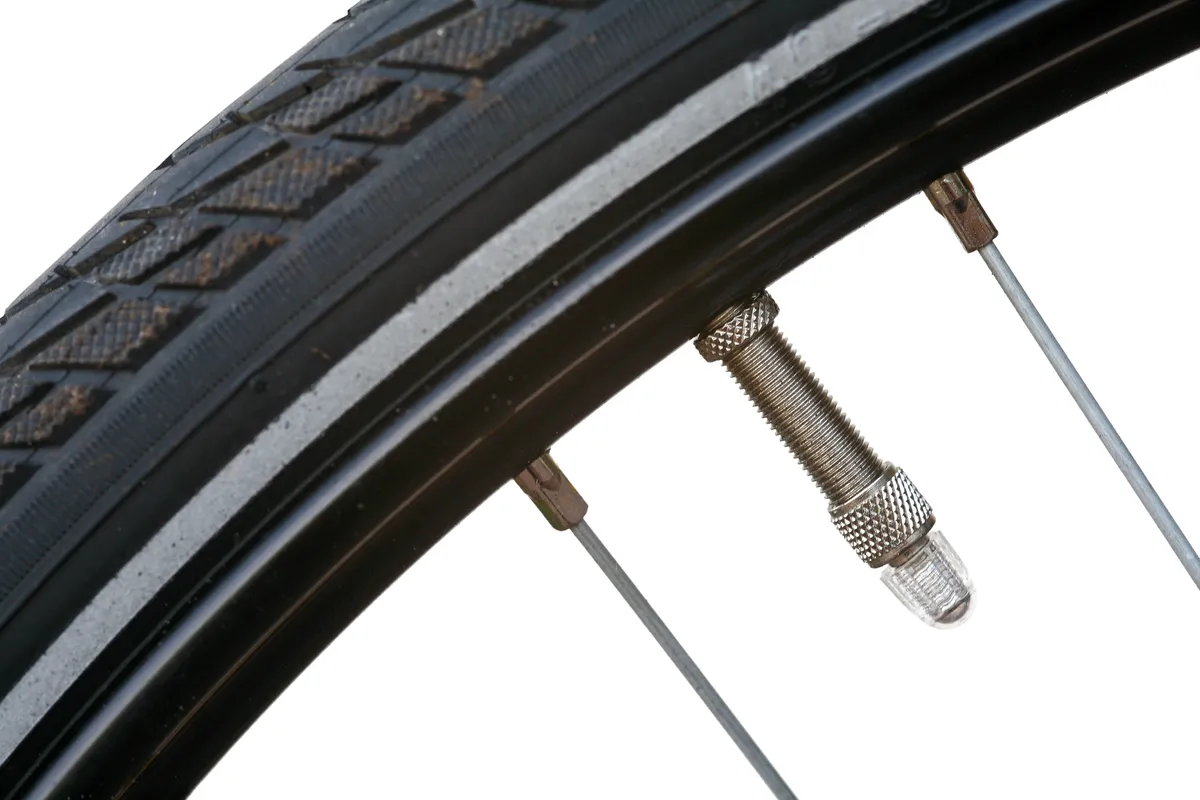
As well as the Presta and Schrader valves, there is also the Woods valve (originally known as Dunlop). It’s rare to find these on production road, mountain, hybrid or gravel bikes, but they are common on Dutch-style bikes.
The valve core used is the same as a Presta valve, with a locking nut keeping the core in place to avoid the tube deflating.
You can use an adaptor to convert a Woods valve into a Schrader valve to allow for easier inflation.
Tubeless valves
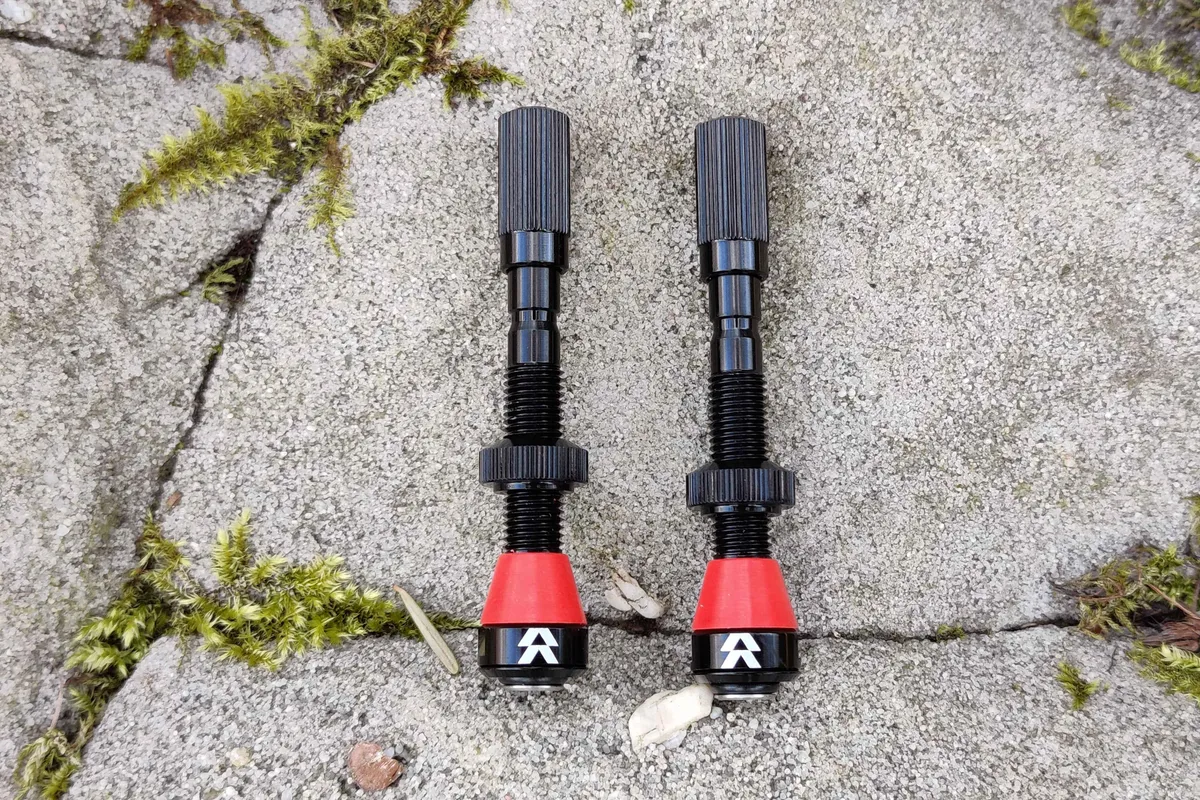
Most tubeless setups use a traditional Presta valve, but with rim widths increasing, some brands have introduced their own valve types.
Reserve's Fillmore tubeless valves are wider than Presta and claimed to allow for greater airflow for seating the tyre quicker. They're also said to reduce the chances of sealant clogging up the stem.
What is a Presta valve?

A Presta valve is bicycle-specific and found on the vast majority of bikes over £500 / $500.
This type of valve is a lot thinner than a Schrader valve, with a skinnier base where the metal bottom of the valve meets the butyl rubber of the tube. There is a core at the top of the valve.
To inflate a Presta valve, you simply unscrew the valve stem anti-clockwise and then attach a pump. Once the desired air pressure has been reached, remove the pump and screw the valve stem clockwise to ensure it is airtight.
The vast majority of tubeless systems (where there is no inner tube and tubeless sealant is used instead to plug any holes or cuts in the tyre) also use Presta valves.
Pros and cons of a Presta valve

Pros
Presta valves are lighter than Schrader valves and the hole required for the valve to fit through the rim is smaller, which improves the structural integrity of the rim. This is particularly important for narrower rims, designed for road use, and also for carbon fibre rims.
It is also easier to minutely adjust the pressure in a Presta valve – if you want to let some air out of the tyre, simply unscrew the valve stem and push down to deflate.
Some Presta valve cores are also removable. This means you only need to replace the valve core if it gets bent (which can happen occasionally), rather than the entire inner tube.
This feature is also useful for a tubeless setup. When setting up a tubeless tyre, it is best to remove the valve core to seat the tyre because the air has a more direct path to the inside of the rim. You can also inject sealant through the valve core.
Cons
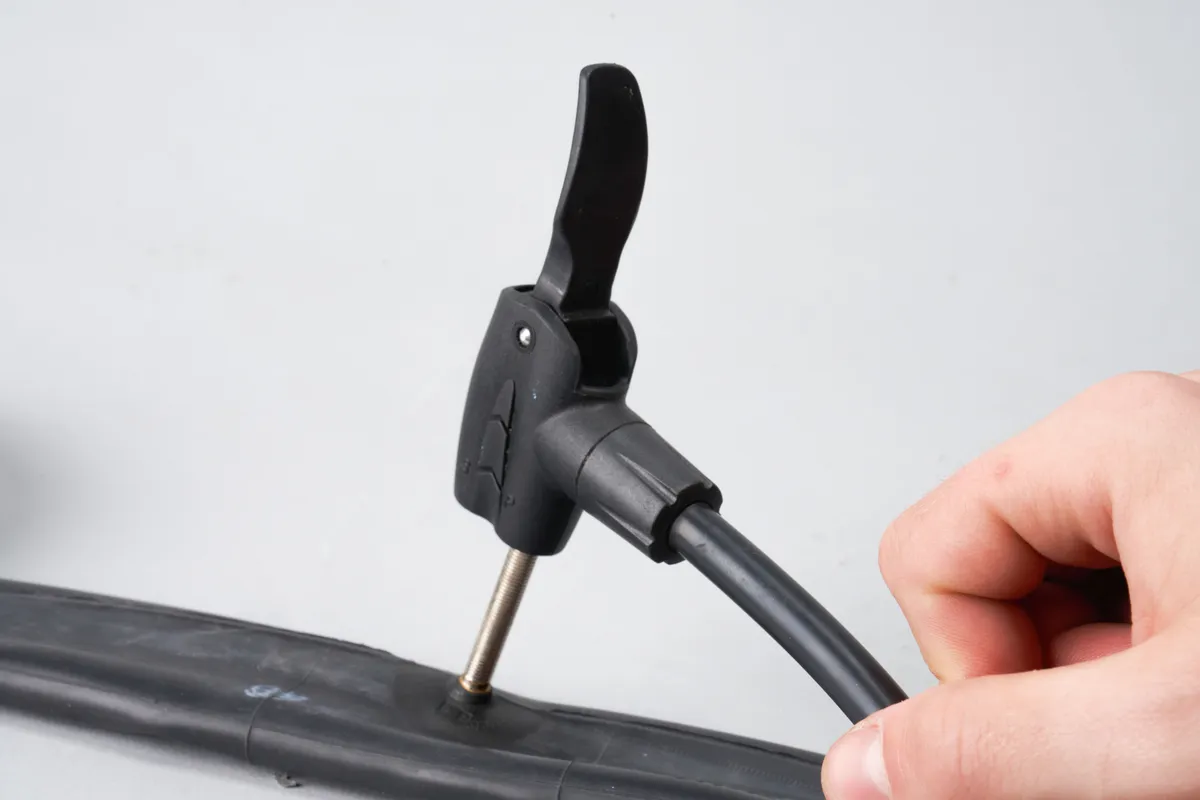
Technically, it takes a little longer to inflate a tyre than with a Schrader valve because you have the additional step of unscrewing the valve stem first.
The valves can also bend if you accidentally attach the pump at a sub-optimal angle. On some pumps, where the pump head threads directly onto the valve core, you may find when you remove the pump, it can unscrew the valve core.
If you need to pump your tyre up on a ride and don’t have a bike pump to hand, look out for a petrol station. You will need to carry an adaptor because the air compressors there are designed for Schrader valves. However, we’d always recommend carrying a pump on any bike ride.
What is a Schrader valve?
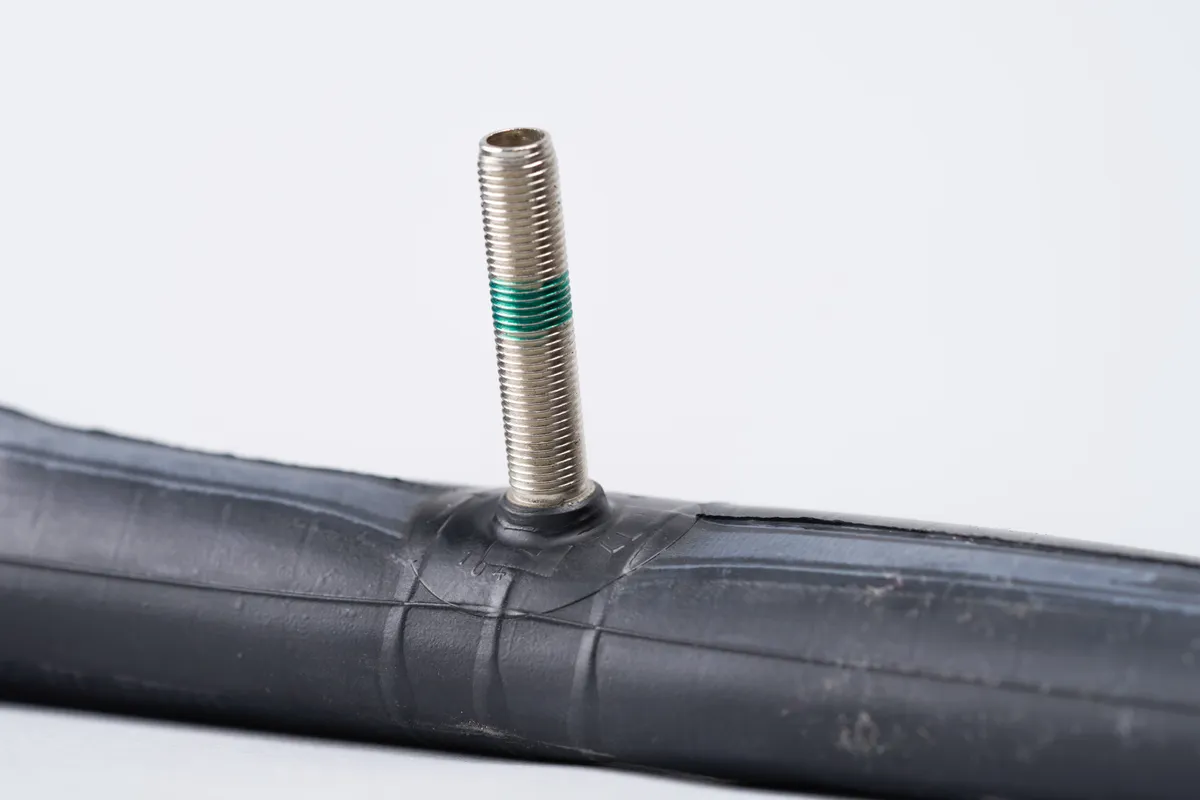
Schrader valves were commonplace on bicycles before the Presta standard largely usurped it. They are now often found on cheaper bikes under £500 / $500, as well as older bikes.
Schrader valves are found on automotive wheels and are shorter and stubbier than Presta valves. Compared to a Presta valve, the hole required for this type of valve in the rim is larger.
To inflate a Schrader valve, simply remove the dust cap (if it has one) and attach the pump.
If you want to decrease the tyre pressure, you’ll need to either carefully press on the spring-loaded internal valve core with your finger or with a tool such as an Allen key.
Pros and cons of a Schrader valve
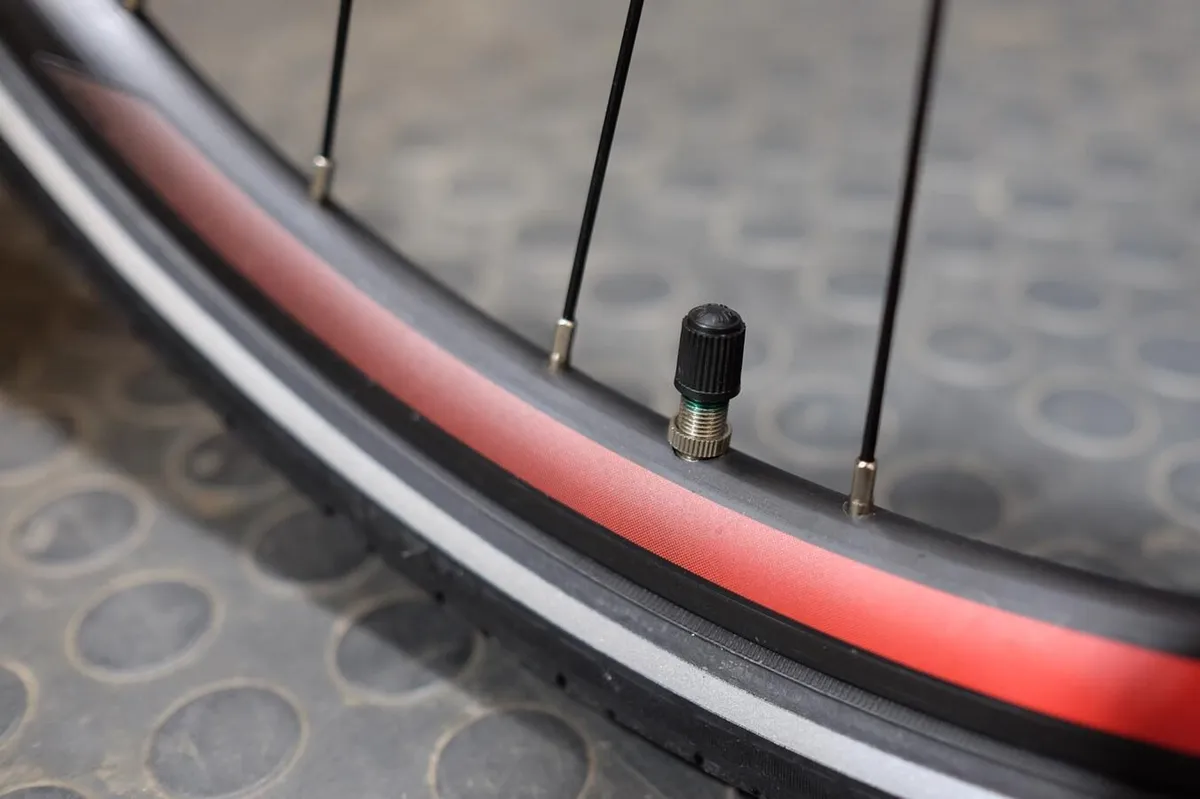
Pros
Inner tubes with a Schrader valve tend to be cheaper, given they’re found on less expensive bikes. It is also marginally quicker to inflate a Schrader valve because you don’t need to loosen the valve stem first.
As we’ve already covered, if you’re not carrying a pump and happen to be near a petrol station, you should also be accommodated if you need to top up your air pressure.
Cons
It is generally more cumbersome to reduce the air pressure on a Schrader valve than Presta, because you’ll need to use a tool if your fingers aren’t small enough.
Inner tubes with a Schrader valve are also slightly heavier than those with a Presta valve (although the difference is not significant enough to be of particular consequence) and require a larger hole in the rim. This can reduce the structural integrity of the rim slightly, given the greater amount of material removed.
What valve type do I need?
If replacing an inner tube or tubeless valve, the valve type you need is the one currently on your bike.
You cannot switch from a Presta valve to a Schrader valve, because the hole in the rim will be too small to accept the larger Schrader valve.
You could install a Presta valve on a rim designed for Schrader, although you would need to use an adaptor that fits over the valve to stop it from rattling in the rim.
Where are bike tyre valves located?
Bike tyre valves are located on the inside face of the rim, usually nestled between the spokes of the wheel.
Depending on your wheel size, it can be tricky to get the head of the pump to reach the valve, so be careful not to bend the stem when attaching the pump.
What type of bike pump do I need for my valve type?
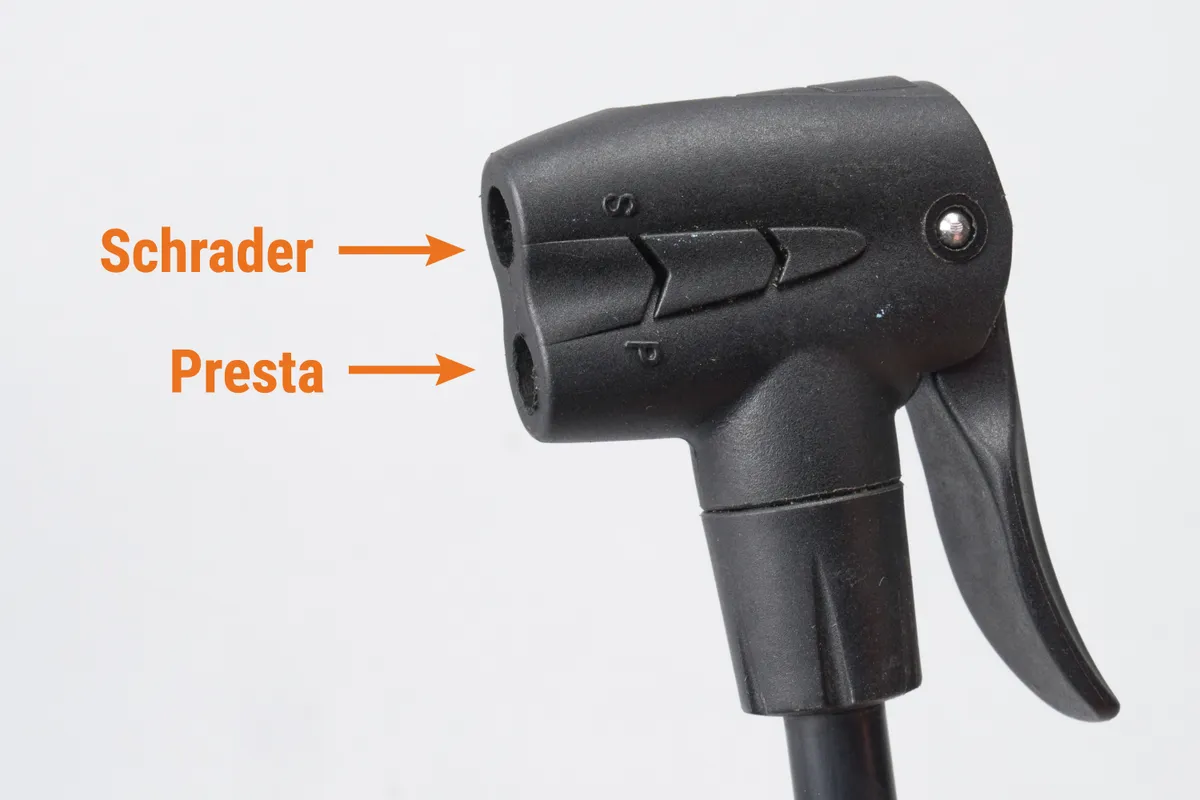
You need to ensure your bike pump is compatible with your inner tube valve type in order to inflate it. The Schrader attachment on a pump is too wide for a Presta valve and won’t lock on, whereas a Presta attachment is too narrow for a Schrader valve.
Some pumps will only be compatible with a certain valve type, but many can be interchanged between the two.
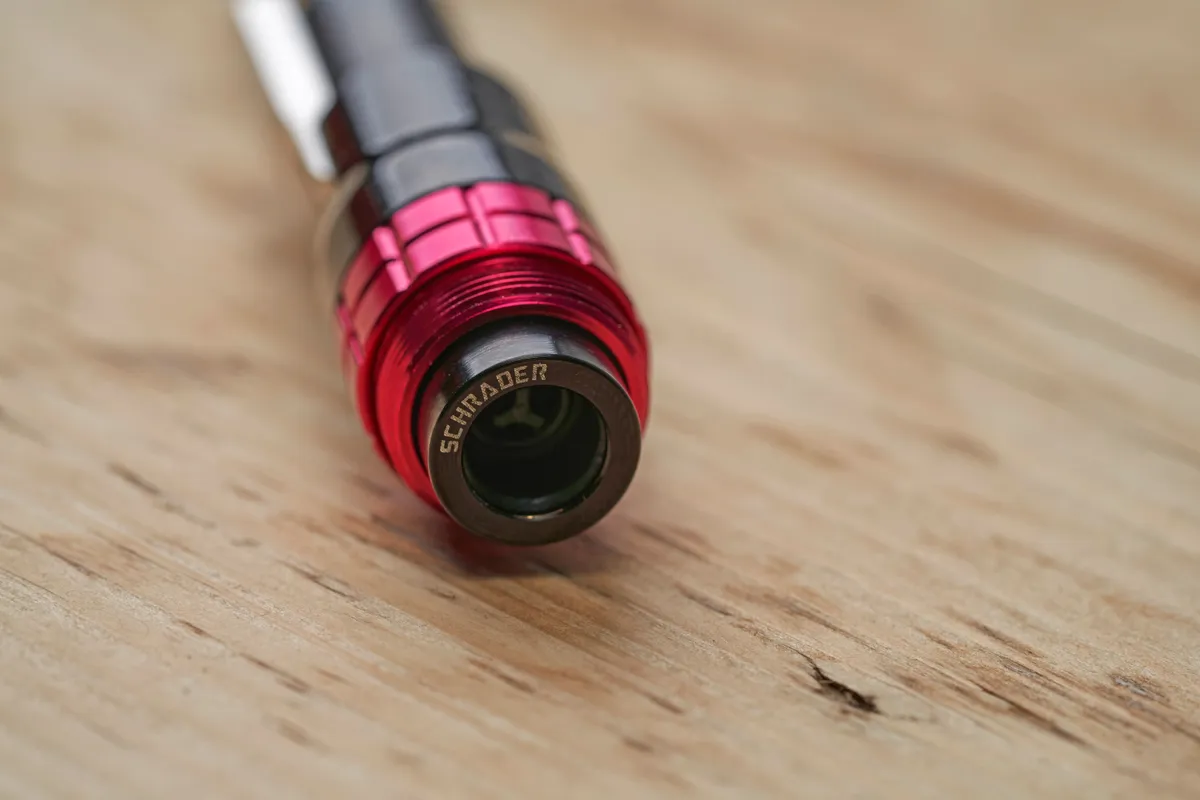
If you’re buying a pump, it’s important to check if it can accept the type of valve your bike has or, ideally, if it will work with both Presta and Schrader valves.
Many pumps feature either adaptors or two open ends on the chuck, one for each valve type.
If your pump is designed exclusively for a Schrader valve and you’re trying to inflate a Presta valve, you can buy an inexpensive adaptor that threads on to convert it.
Bike tyre valve lengths

Some bike tyre valves, but mostly Presta valves, come in different lengths to enable them to fit into more aerodynamic deep-section wheels.
This is usually the case for road bike wheels, but more gravel wheels are adopting the aero flaring.
Valve extenders are available for these wheels, which will enable you to run any sized valve.
